India & World UpdatesAnalyticsBreaking NewsFeature Story
COVID-19 & Epidemiological Imagination, writes Mehdi Hasan Chowdhury
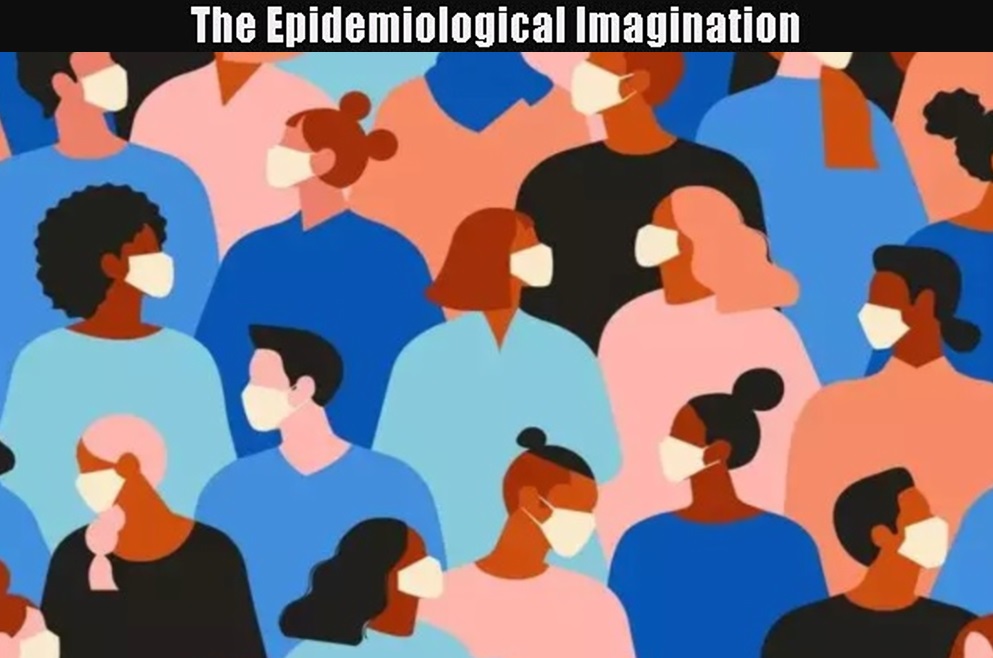
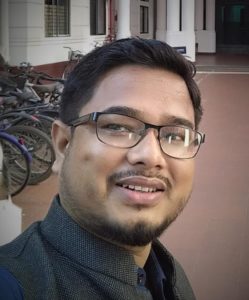
=Mehdi Hasan Chowdhury=
April 2: Not many days ago, in the city of Wuhan by the Yangtze River lived a young doctor. One December day, he shared a fateful message on the possible perils of a peculiar virus. The police chastised him on charges of spreading rumour and breaking social balance. Undeterred, however, he returned to his hospital to tend the sick. February brought fever and cough, and the horrendous hands of the pandemic choked him to death. This is the story of Li Wenliang and the novel coronavirus or COVID-19 that sparked global grief and outrage. Like a modern-day Antigone, Wenliang defied authoritarian strictures for a greater good. After his death, an official inquiry exonerated him. In him we find a hero of our times.
 History tells us that humans have borne the burden of diseases in the form of the plague of Justininan during the Roman empire, the Black Death of the Middle Ages, the Spanish flu of 1918, the Asian flu of 1957, among others, evoking both realistic and imaginative responses from artists. Today, as life is under viral invasion, terms like pandemic/epidemic, quarantine and social distancing have gone viral too. Alongside everyday essentials, masks, sanitizers, toilet papers and literature of epidemiological imagination have seen an exponential demand amidst decline in global economy.
History tells us that humans have borne the burden of diseases in the form of the plague of Justininan during the Roman empire, the Black Death of the Middle Ages, the Spanish flu of 1918, the Asian flu of 1957, among others, evoking both realistic and imaginative responses from artists. Today, as life is under viral invasion, terms like pandemic/epidemic, quarantine and social distancing have gone viral too. Alongside everyday essentials, masks, sanitizers, toilet papers and literature of epidemiological imagination have seen an exponential demand amidst decline in global economy.
 The globe, networked by people, pathogen and ecosystem, is currently on a war footing. In this crisis, one imagery that stands out as an Eliotian objective correlative is that of the haunting transformation of the usually bustling landscapes into deserted spaces, evacuated by people and cultural signifiers. This emptiness, one is tempted to imagine, in spite of Susan Sontag’s caution against viewing disease as metaphor, is a projection of the emptiness of meaning during an existential crisis.
The globe, networked by people, pathogen and ecosystem, is currently on a war footing. In this crisis, one imagery that stands out as an Eliotian objective correlative is that of the haunting transformation of the usually bustling landscapes into deserted spaces, evacuated by people and cultural signifiers. This emptiness, one is tempted to imagine, in spite of Susan Sontag’s caution against viewing disease as metaphor, is a projection of the emptiness of meaning during an existential crisis.
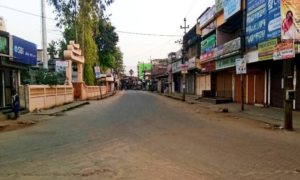 Times such as this also remind us of the human affinity for epidemiological imagination in the form of literary works based on pandemic/epidemic. These literary texts provide a historical consciousness of pestilential phenomenon which may be deployed as tools in our present endeavours to grapple with and curtail the dispersal of disease. In India, the mythology of the goddess Sitala is found in the religious poetry tradition of Mangal-kavya.
Times such as this also remind us of the human affinity for epidemiological imagination in the form of literary works based on pandemic/epidemic. These literary texts provide a historical consciousness of pestilential phenomenon which may be deployed as tools in our present endeavours to grapple with and curtail the dispersal of disease. In India, the mythology of the goddess Sitala is found in the religious poetry tradition of Mangal-kavya.
 Historian David Arnold has written (Colonizing the Body), among others, on the practice of worshipping Sitala as goddess of smallpox in many parts of India, including Bengal, Assam and Orissa. In Bengal, Sitala is also known as Basanta/Basanta-chandi and hence the name ‘basanta rog’ for smallpox, the disease being common in spring. In this tradition, smallpox is understood as Sitala’s sport or play. There is also a deity of cholera known variously as Oladevi or Olabibi or Olaichandi.
Historian David Arnold has written (Colonizing the Body), among others, on the practice of worshipping Sitala as goddess of smallpox in many parts of India, including Bengal, Assam and Orissa. In Bengal, Sitala is also known as Basanta/Basanta-chandi and hence the name ‘basanta rog’ for smallpox, the disease being common in spring. In this tradition, smallpox is understood as Sitala’s sport or play. There is also a deity of cholera known variously as Oladevi or Olabibi or Olaichandi.
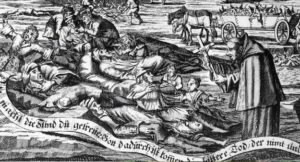 As regards world literature, there is a rich granary of works based on the trope of pandemic/epidemic. In Sophocles’ Oedipus the King and Antigone, the outbreak of plague is viewed through a moral framework of men’s misdeeds and God’s wrath. In The Decameron, Boccaccio’s storytellers retire from the Black Death-gripped city to the safety of a quarantined villa and tell their tales thereby distancing death. Though Shakespeare did not use the plague for any detailed dramatisation, some of his plays like King Lear and Romeo and Juliet, among other texts, deploy the plague through allusions or metaphors. Ben Jonson’s The Alchemist, set in a plagued London, was performed as the threat of plague persisted in the city. The play mirrors the carnivalesque disruption of city life through the visitations of plague.
As regards world literature, there is a rich granary of works based on the trope of pandemic/epidemic. In Sophocles’ Oedipus the King and Antigone, the outbreak of plague is viewed through a moral framework of men’s misdeeds and God’s wrath. In The Decameron, Boccaccio’s storytellers retire from the Black Death-gripped city to the safety of a quarantined villa and tell their tales thereby distancing death. Though Shakespeare did not use the plague for any detailed dramatisation, some of his plays like King Lear and Romeo and Juliet, among other texts, deploy the plague through allusions or metaphors. Ben Jonson’s The Alchemist, set in a plagued London, was performed as the threat of plague persisted in the city. The play mirrors the carnivalesque disruption of city life through the visitations of plague.
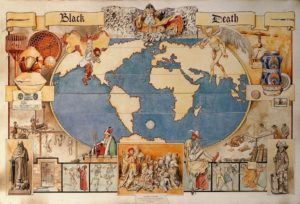 Likewise, Defoe’s Journal of the Plague Year offers a graphic portrait of a London beset with plague: “London might well be said to be all in tears”, informs the book’s narrator. In The Plague, Camus portrays life during a plague epidemic in the French Algerian city of Oran. Reading these and many such literary instances help enrich our conception of human existence amidst pestilences and make us saner in the event of catastrophe.
Likewise, Defoe’s Journal of the Plague Year offers a graphic portrait of a London beset with plague: “London might well be said to be all in tears”, informs the book’s narrator. In The Plague, Camus portrays life during a plague epidemic in the French Algerian city of Oran. Reading these and many such literary instances help enrich our conception of human existence amidst pestilences and make us saner in the event of catastrophe.
 Today, humans are healthier than before but also more concerned about health. The ongoing social distancing and quarantine have produced new conceptions of self, spaces and reflexes. These have induced everyday control, on contact between human bodies and with objects, not merely by the state but by individuals themselves too. Bodily proximity is now viewed through the prism of precariousness and contagion.
Today, humans are healthier than before but also more concerned about health. The ongoing social distancing and quarantine have produced new conceptions of self, spaces and reflexes. These have induced everyday control, on contact between human bodies and with objects, not merely by the state but by individuals themselves too. Bodily proximity is now viewed through the prism of precariousness and contagion.
 As we undergo spatial adjustments and discipline our behaviour, mobility and gesture – handshakes replaced by namaste and salam, for instance, we realise that our bodies are fragile during immunological invasions. We also realise that the ecosystem’s health is vital for our sustenance, and that climate change is no fiction but a potent cause for the mutation of virulent viruses. The 20th century witnessed great strides in medicine comforting our fictive belief of having wholly vanquished virulent diseases. However, the battles against pestilences like SARS, H1N1, MERS, Ebola, and Zika virus have exposed our persistent vulnerability.
As we undergo spatial adjustments and discipline our behaviour, mobility and gesture – handshakes replaced by namaste and salam, for instance, we realise that our bodies are fragile during immunological invasions. We also realise that the ecosystem’s health is vital for our sustenance, and that climate change is no fiction but a potent cause for the mutation of virulent viruses. The 20th century witnessed great strides in medicine comforting our fictive belief of having wholly vanquished virulent diseases. However, the battles against pestilences like SARS, H1N1, MERS, Ebola, and Zika virus have exposed our persistent vulnerability.
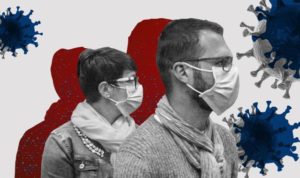 Li Wenliang and the many selfless soldiers combating COVID-19 educate us on the need for unmediated flow of right information at the right time to combat contagion. For a nation like India with a heterogeneous population, the response to pandemic is a herculean task. Issues like evading voluntary declaration, breaking of curfew, testing for COVID-19 and exodus of urban migrant workers add to the anxiety of contagion and the work of the state agencies. Any pandemic can be fruitfully tackled only when we build adequate public health infrastructure.
Li Wenliang and the many selfless soldiers combating COVID-19 educate us on the need for unmediated flow of right information at the right time to combat contagion. For a nation like India with a heterogeneous population, the response to pandemic is a herculean task. Issues like evading voluntary declaration, breaking of curfew, testing for COVID-19 and exodus of urban migrant workers add to the anxiety of contagion and the work of the state agencies. Any pandemic can be fruitfully tackled only when we build adequate public health infrastructure.
 These uncanny times have once again exhibited the correlation between racial stereotypes and occurrence of pandemic/epidemic. Beside Sinophobia, citizens from Northeast India have also faced racism based on their ethnic physiognomy. Currently, COVID-19 is being variously construed as ‘foreign’, ‘Chinese’/’Wuhan’, ‘American’ or as a possible biological weapon, yet the virus is a blind and indiscriminate vector with unificatory potential. The haves and have-nots, young and old, and white and black have become one in their shared identity as biological citizens informed by fragile lives. This is reflected in the new formations of everyday selves, and local and international solidarity and cooperation towards overcoming this crisis. However, the worst sufferers are the poor who survive hand to mouth, and the vagrants.
These uncanny times have once again exhibited the correlation between racial stereotypes and occurrence of pandemic/epidemic. Beside Sinophobia, citizens from Northeast India have also faced racism based on their ethnic physiognomy. Currently, COVID-19 is being variously construed as ‘foreign’, ‘Chinese’/’Wuhan’, ‘American’ or as a possible biological weapon, yet the virus is a blind and indiscriminate vector with unificatory potential. The haves and have-nots, young and old, and white and black have become one in their shared identity as biological citizens informed by fragile lives. This is reflected in the new formations of everyday selves, and local and international solidarity and cooperation towards overcoming this crisis. However, the worst sufferers are the poor who survive hand to mouth, and the vagrants.
 As India reels unprecedentedly under lockdown, the citizenry duty at hand is to stay safely within our homes following government guidelines and avoiding additional burden. It is good to realise that diseases, in one form or another, are here to stay with humans. Camus’ The Plague ends insightfully: “the plague bacillus never dies or disappears for good … perhaps the day would come when, for the bane and the enlightening of men, it would rouse up its rats again and send them forth to die in a happy city”. This is a wisdom that literary works with epidemiological imagination impart. It is for us and the state to use this wisdom for a safer tomorrow.
As India reels unprecedentedly under lockdown, the citizenry duty at hand is to stay safely within our homes following government guidelines and avoiding additional burden. It is good to realise that diseases, in one form or another, are here to stay with humans. Camus’ The Plague ends insightfully: “the plague bacillus never dies or disappears for good … perhaps the day would come when, for the bane and the enlightening of men, it would rouse up its rats again and send them forth to die in a happy city”. This is a wisdom that literary works with epidemiological imagination impart. It is for us and the state to use this wisdom for a safer tomorrow.
– **Mehdi Hasan Chowdhury is an Assistant Professor of English at Gurucharan College, Silchar, Assam. (Formerly, he was an Assistant Professor in Delhi University’s Rajdhani College.)





